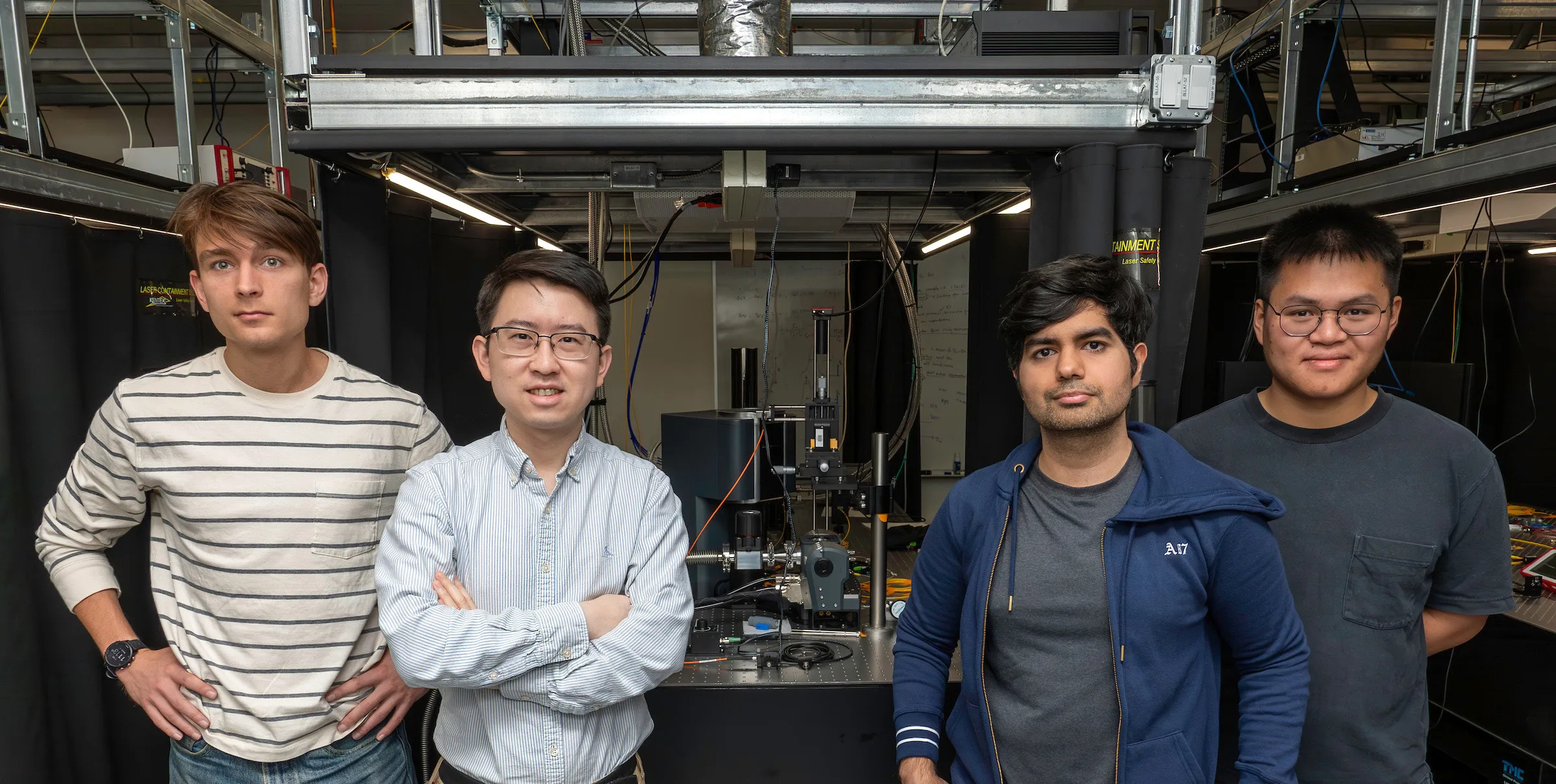Rice University engineers have found a way to control the optical properties of atomic imperfections in silicon material, known as T centers, which could be used to build quantum networks. The team, including Songtao Chen, Adam Johnston, Ulises Felix-Rendon, and Yu-En Wong, increased the efficiency of T center single photon emission, a key hurdle in making T center-based qubits viable for quantum networking. The research, supported by the National Science Foundation, the Robert A. Welch Foundation, and the Rice Faculty Initiative Fund, could help overcome current limitations in quantum technology.
Understanding T Centers in Silicon Material
Rice University engineers have made a significant advancement in the field of quantum networking by manipulating the optical properties of atomic imperfections, known as T centers, in silicon material. T centers are atomic defects in the regular lattice of silicon and have recently garnered interest due to their potential as qubit building blocks for quantum networking. They emit single photons at a wavelength that is advantageous for telecommunication applications, but their low photon emission rate has been a challenge.
Enhancing Photon Emission Rate
The photon emission rate of T centers is crucial for their viability as qubit building blocks. This emission rate is tied to the phenomenon of spontaneous emission, which is the process by which a quantum mechanical system transitions to a lower-energy state by releasing some of its energy in the form of a photon. The team at Rice University has been working on enhancing the rate of spontaneous emission in T centers to overcome this hurdle.
The Role of Photonic Integrated Circuits
The team at Rice University has made strides in increasing the collection efficiency for T center single photon emission by embedding a T center in a photonic integrated circuit. This approach has resulted in an increase in the collection efficiency for T center single photon emission by two orders of magnitude compared with typical confocal-type experiments. The team demonstrated that coupling with a photonic crystal cavity enhances a T center’s photon emission rate by a factor of seven, exploiting a phenomenon known as the Purcell effect.
The Purcell Effect and Quantum Networks
The Purcell effect refers to the phenomenon where the coupling between the photonic cavity structure and T center grows stronger as they exchange photon energy increasingly rapidly, shortening the time that energy is stored in the T center. The team at Rice University has shown that they can deploy the Purcell effect to achieve the purest single photon emission among all color centers in silicon to date and the largest photon emission enhancement for a single T center. This finding is a significant step toward advancing quantum networks, which rely on the quantum properties of photons to encode information, allowing for both significantly more powerful computing as well as enhanced security.
Quantum Networks and Future Applications
Quantum networks have the potential to revolutionize the field of computing and data security. The security of quantum communications is guaranteed by the fundamentals of quantum mechanics, enabling detection of eavesdroppers with a high probability and thus improving the protection of sensitive data. Companies such as Google and IBM have demonstrated significant advantages of quantum computers over their classical counterparts. However, many of the world’s most advanced quantum computers are restricted to sending information over wires cooled to cryogenic temperatures, which limits the scalability of these systems. The work done by the team at Rice University could be instrumental for developing quantum networks to connect remote quantum computers and moving past current roadblocks in quantum technology.
External Link: Click Here For More

